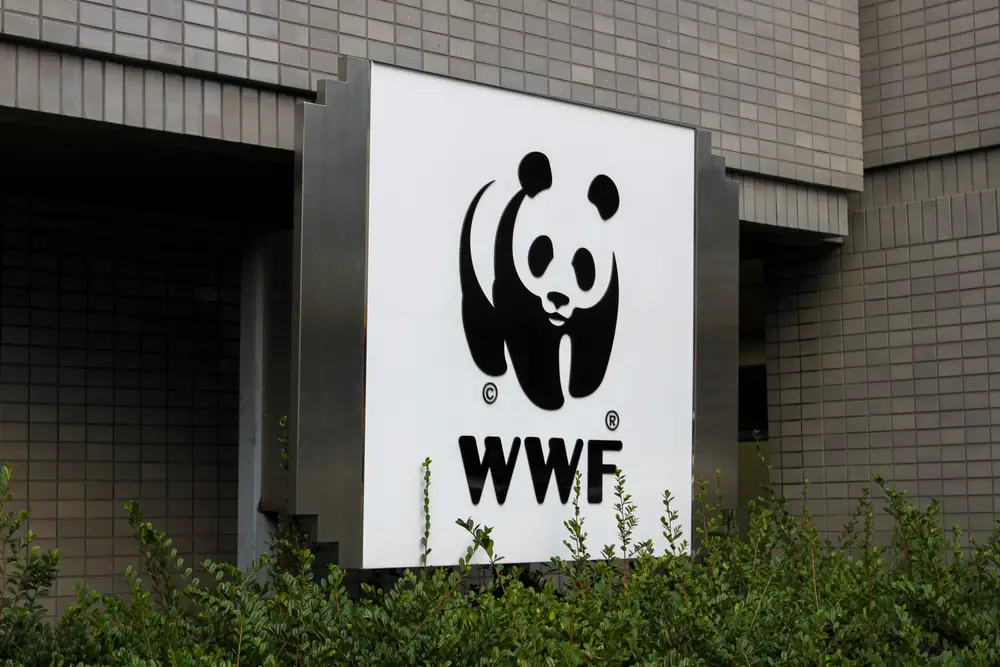The ethical debate surrounding the captivity of wild animals persists as a contentious issue.
Yet, a recent observation of a family of polar bears at Peak Wildlife Park in Staffordshire, England, offers a glimpse into an enclosure innovation that seems to bring joy to its inhabitants. Delightfully captured in a video shared on the park’s Instagram page, the footage showcases the polar bear mother, Hope, along with her twin cubs, Nanook and Noori.
Polar Bears’ New Aquatic Play
These majestic creatures are seen reveling in a novel addition to their expansive five-acre habitat—a specially crafted water raft designed by their keeper.
The bears exhibit sheer delight as they leap from rocks onto the raft, engaging in a playful display of jumping and floating.
This thoughtful enrichment initiative not only underscores the commitment of the park to the well-being of its resident animals but also prompts a reconsideration of the complexities surrounding captive wildlife.
As we witness these polar bears engaging with their environment in a seemingly joyful manner, questions about the balance between conservation, education, and animal welfare arise, urging us to reflect on the evolving standards within the realm of wildlife management.
Becky Parsons, spokesperson for Peak Wildlife Park, shared insights into the meticulous efforts behind enhancing the lives of their resident polar bears.

Mike’s Passion Project
Motivated by a genuine passion for animal welfare, their dedicated keeper, Mike, took on the challenge of constructing an innovative enrichment feature after learning about an unsuccessful attempt at another zoo.
Demonstrating a commitment to excellence, Mike collaborated with the other zoo, successfully bringing the project to fruition. This initiative underscores the park’s dedication to continually improve the well-being of their animals.
The polar bears at Peak Wildlife Park benefit from a dynamic enclosure designed to provide daily enrichment activities.
According to Parsons, these activities serve the purpose of keeping the bears mentally, physically, and environmentally stimulated. The park’s commitment to simulating the natural habitat of the polar bears is evident in the thoughtful design of the enclosure.
The natural habitat is achieved in the following manner:
- Wood chip piles, strategically placed to mirror snow and ice, offer spaces for the bears to engage in natural behaviors such as jumping, sleeping, and rolling.
- The enclosure is meticulously crafted, featuring natural hills, mounds, and trees that closely mimic the bears’ native landscape.
- The area comprises two distinct designs, each offering the bears a choice in their surroundings.
- One area is more open, while the other boasts a denser tree presence, providing varied environments for the bears to explore. Both sections incorporate large, deep pools, with depths of 8 and 6 meters respectively.
- Recognizing the polar bears’ affinity for aquatic activities, the park ensures that they have ample opportunities to engage with these pools, reflecting a holistic approach to their physical and mental well-being.
This thoughtful and comprehensive design reflects the park’s commitment to creating an environment that promotes the natural instincts and behaviors of their cherished polar bear residents.
The Story of Hope – A Polar Bear Mother
At eight years old, Hope, the polar bear mother, resides with her twin cubs, set to turn two in November.

Their journey to Peak Wildlife Park began when a zoo in Sweden, their initial home, unfortunately closed down, necessitating their relocation, as shared by Becky Parsons.
The Complexities of Wildlife in Captivity
The ethical considerations surrounding animal captivity evoke varied opinions, prompting a nuanced exploration.
Esteemed naturalist David Attenborough, during a Q&A preceding the launch of his BBC series “A Perfect Planet” in 2020, emphasized the necessity of evaluating captive environments on a species-specific basis.
Attenborough discerns that while eagles may not fare well in zoos, other species, such as monkeys and aquatic animals, can thrive under appropriate conditions. His perspective advocates for scientific rigor, selectivity, and stringent standards in zoo management.
Attenborough underscores the importance of public awareness, urging people to engage with animals closely to understand their realities—their smells, sounds, and the intricacies of their existence.
Ultimately, he contends that, provided zoos adhere to scientific principles, select their residents judiciously, and maintain the highest standards, they can be justifiable.
Peak Wildlife Park on Polar Bear Care
The repercussions of climate change on the Arctic have profoundly affected the natural habitat of polar bears, as reported by the World Wide Fund for Nature (WWF).

The ongoing and projected loss of sea ice, a consequence of climate change, poses a significant threat to polar bears across the Arctic region. Recognizing this peril, the WWF played a crucial role in designating polar bears as a threatened species under the Endangered Species Act in the United States in May 2008.
Presently, the status of polar bears is deemed “vulnerable,” indicative of the precarious state of their population.
With estimates suggesting a remaining population of 22,000 to 31,000 in the wild, the urgency of conservation efforts is underscored, emphasizing the critical need for comprehensive measures to safeguard the future of these iconic Arctic inhabitants.
At Peak Wildlife Park, the care and well-being of their resident polar bears extend beyond mere sustenance, manifesting in a carefully curated seasonal diet that mimics the natural rhythms of the wild.
Becky Parsons, a spokesperson for the park, provides insight into this dietary strategy, noting the transition towards a more meat and fat-based regimen as winter approaches. This thoughtful approach acknowledges the bears’ biological patterns, fostering a connection to their natural habitat.
Amidst the ongoing discourse on animals in captivity, Parsons addresses the pivotal role of accreditation by organizations such as the European Association of Zoos and Aquaria (EAZA) and the British and Irish Association of Zoos and Aquariums (BIAZA).
These accreditations symbolize an unwavering commitment to the highest standards of animal welfare, underscored by close collaboration with species monitors to ensure genetic health. This collaborative effort, as Parsons emphasizes, is a crucial facet of safeguarding the future well-being of their counterparts in the wild.
The Role of Research at Peak Wildlife Park
Peak Wildlife Park, in its mission to secure wildlife and wild places, extends its impact beyond the confines of the park itself.
Not only does it contribute to charitable initiatives like Polar Bears International, Lemur Love, and Sphenisco (a Humboldt penguin charity), but it also prioritizes education as a powerful tool for conservation.
The park offers an engaging and educational experience for school children, imparting knowledge about the diverse animal species within its grounds, the challenges these creatures face in the wild, and the tangible actions that can be taken to contribute to their conservation.
This commitment extends to all park visitors, facilitated through informative signage and daily keeper talks.
Integral to Peak Wildlife Park’s mission is the pursuit of knowledge through research endeavors undertaken by volunteers, employees, and students. This research plays a pivotal role in enhancing understanding and support for various species, both within the confines of the zoo and in their natural habitats.
The emphasis on research reflects a holistic commitment to wildlife conservation, combining hands-on efforts within the park with a broader scope that extends to supporting species in the wild.
Social Media Reactions
Social media platforms, such as Instagram, provide a glimpse into public sentiments regarding the park’s initiatives. The footage of polar bears enjoying a newly crafted water raft sparked diverse reactions.

Some users expressed delight, drawing whimsical parallels between the bears and domestic dogs, while others questioned the concept of captive polar bears.
The ensuing debate highlighted the nuanced perspectives on animal captivity, with one user advocating for freedom and another countering with the sobering reality that freedom, in the case of these vulnerable bears, might equate to a perilous decline in their population.
In essence, the narrative surrounding Peak Wildlife Park’s polar bears encapsulates a multifaceted approach to animal care, combining scientific rigor, education, conservation, and public engagement.
The park’s dedication to replicating natural conditions, supporting charitable initiatives, and fostering an environment of learning reflects a commitment to responsible and ethical wildlife management in captivity. The different reactions on social media show a small picture of the larger conversation about keeping animals in captivity. They highlight how important it is to keep talking about these complicated topics and try to understand all aspects involved.

This Site Was Inspired By An Interest in Protecting the Environment:
We had the privilege and joy of learning from Dr. Charlie Stine who instilled a love for the natural world through incredible field trips with the Johns Hopkins Odyssey Certificate program in Environmental Studies. At the time, the program was endorsed by the Maryland Department of Natural Resources. Sadly, after Dr. Stine retired, the program was phased out. We hope that we honor his legacy by shining a bright light on environmental issues and sharing good news about the success of various conservation programs when possible.

